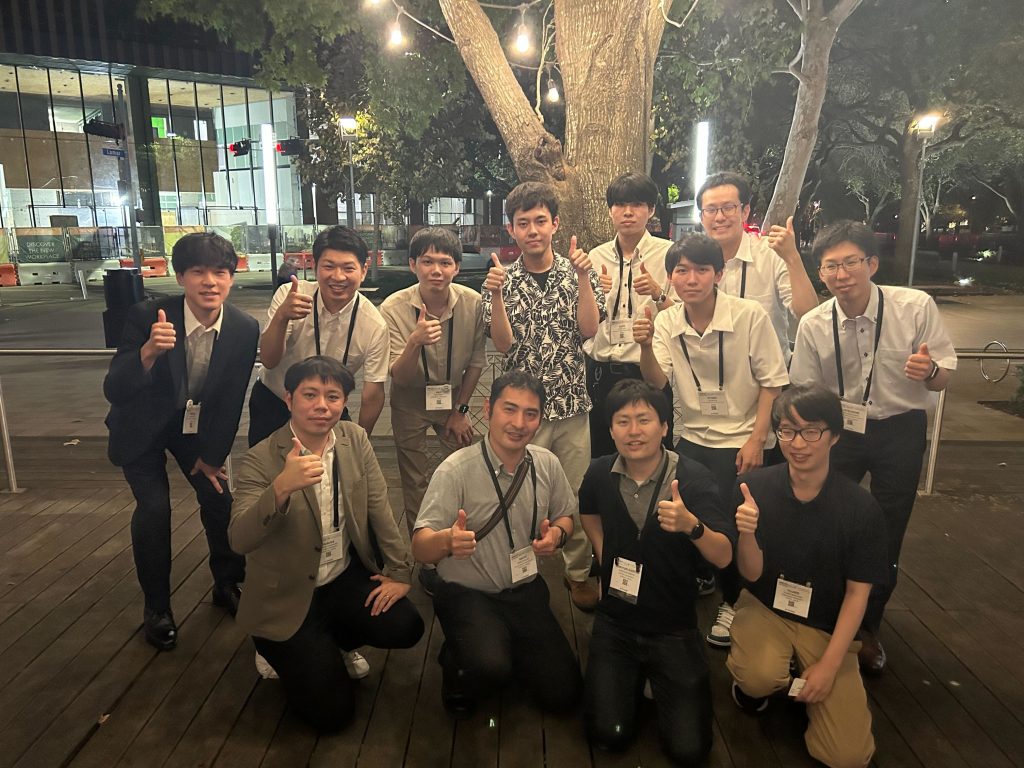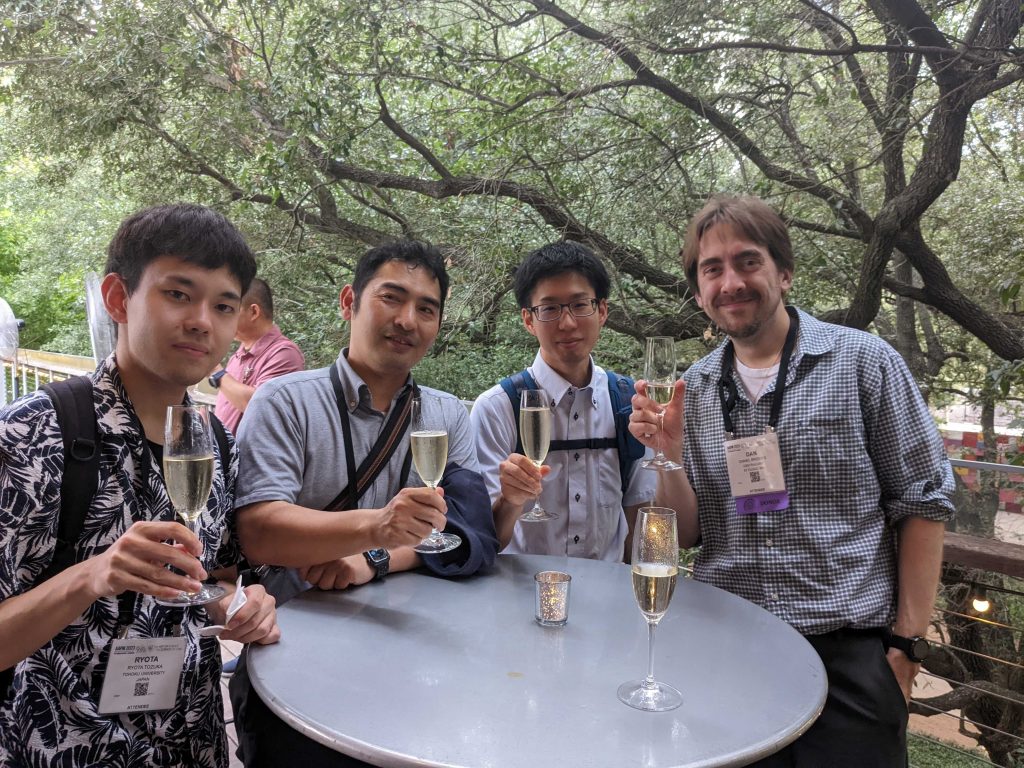2023 7.23~27:AAPM 2023
Prof. Kadoya, and Mr. Totsuka (M2) participated in the American Association for Medical Physics (AAPM) 2023.
■Date: 2023.7.23-27
■Avenue: George R. Brown Convention Center (Houston)
■Conference name: AAPM2023
Assistant professor: Noriyuki Kadoya
It was my first time to participate in an overseas academic conference in three years due to the coronavirus (I was a little worried because I hadn’t been overseas in a long time, but I made it safely…). One of the reasons why I participated in the field this year was the lecture at the KSMP-JSMP-KAMPiNA Joint Symposium held the day before the AAPM. KSMP stands for the Korean Society of Medical Physics, KAMPiNA stands for the group of Korean physicists working in the United States, and JSMP stands for the Japanese Society of Medical Physics. This is a symposium to discuss the current status of research and educational situation in Korea and Japan. I gave a lecture on technology development related to radiation therapy AI, such as AI-based treatment planning. Many questions were asked at the venue and at the dinner after the event, and information was exchanged with medical physicists from the United States and South Korea, such as Professor Kim of Yonsei University in South Korea and Assistant Professor Han of Yale University. I was able to learn about the development status and spend a very meaningful time (Dr. Kanai from Tokyo Women’s Medical University, who is an alumnus of our laboratory, also participated).
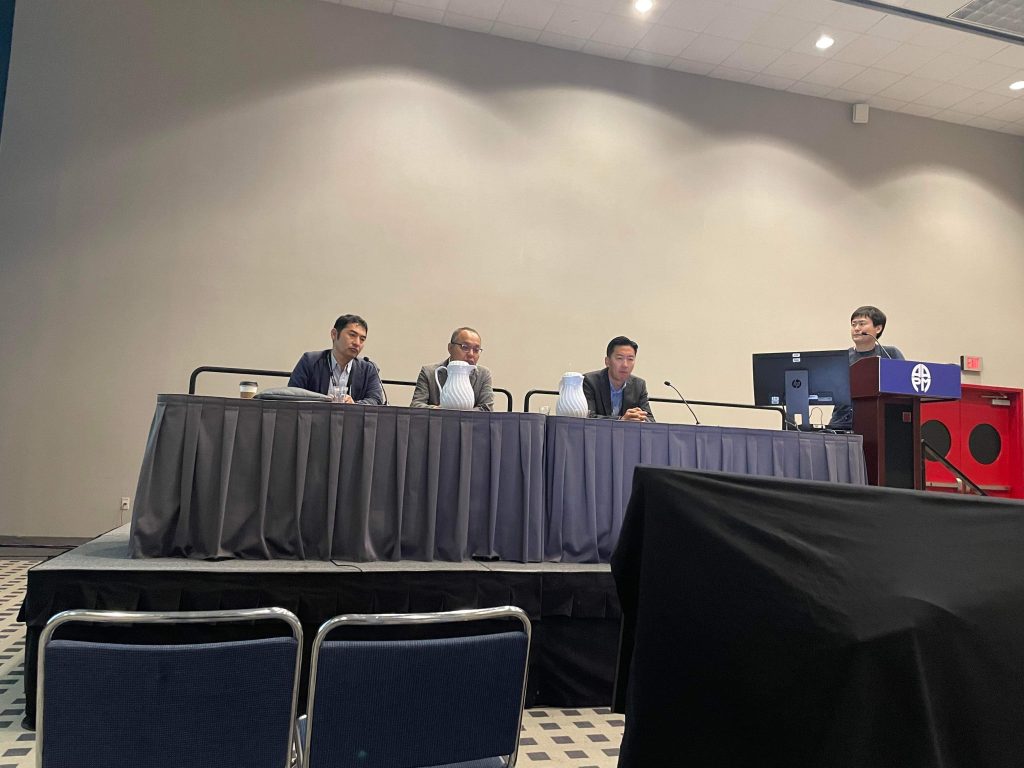
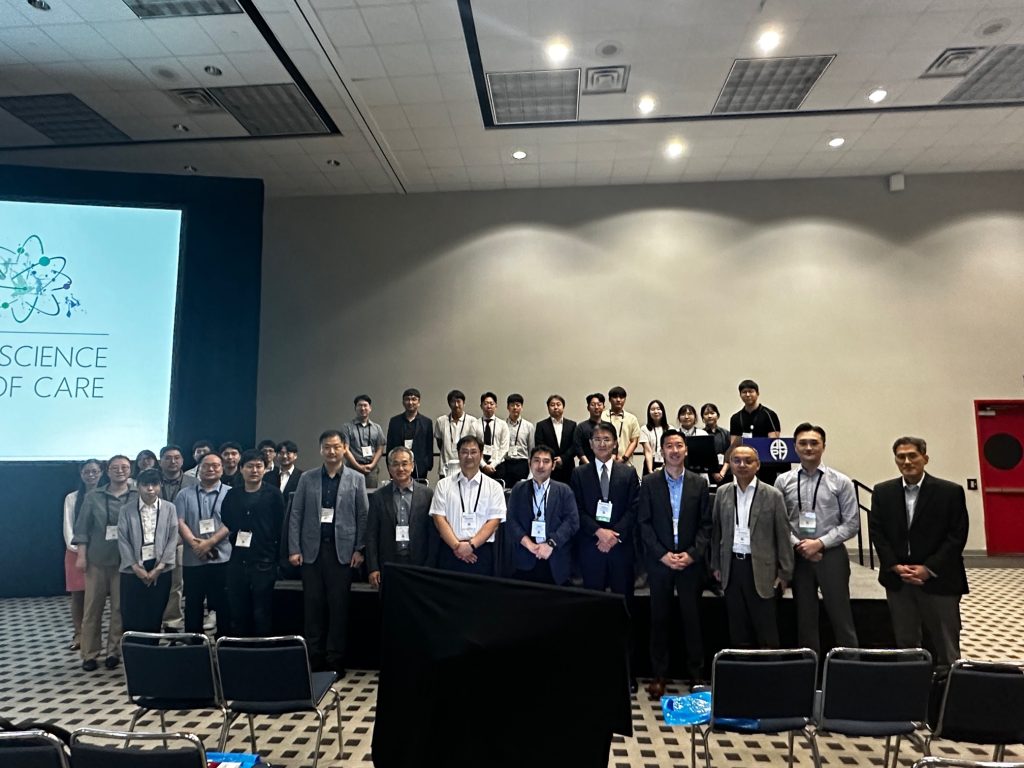
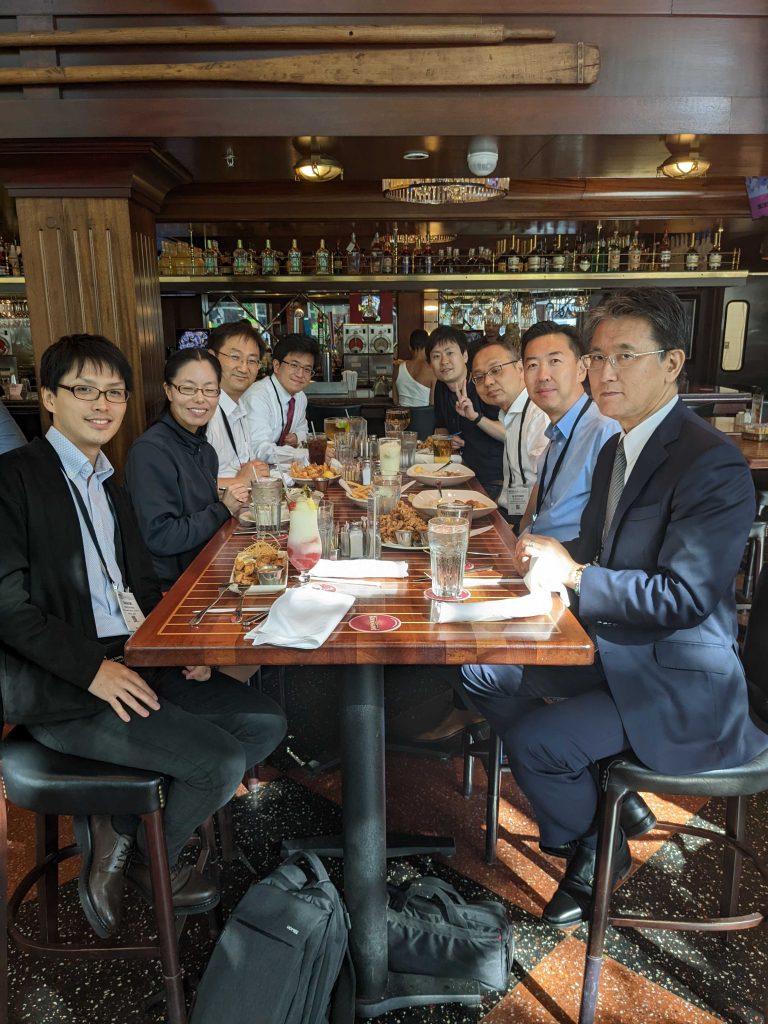
In addition, Mr. Totsuka, who participated with me, gave a presentation on a new method (without actual measurement) that uses AI to virtually perform patient QA with MR-Linac.
Mr. Totsuka actively collected information about the latest radiotherapy-related equipment at the equipment exhibition (with Prof. Nakajima of Komazawa University, who is an alumnus).
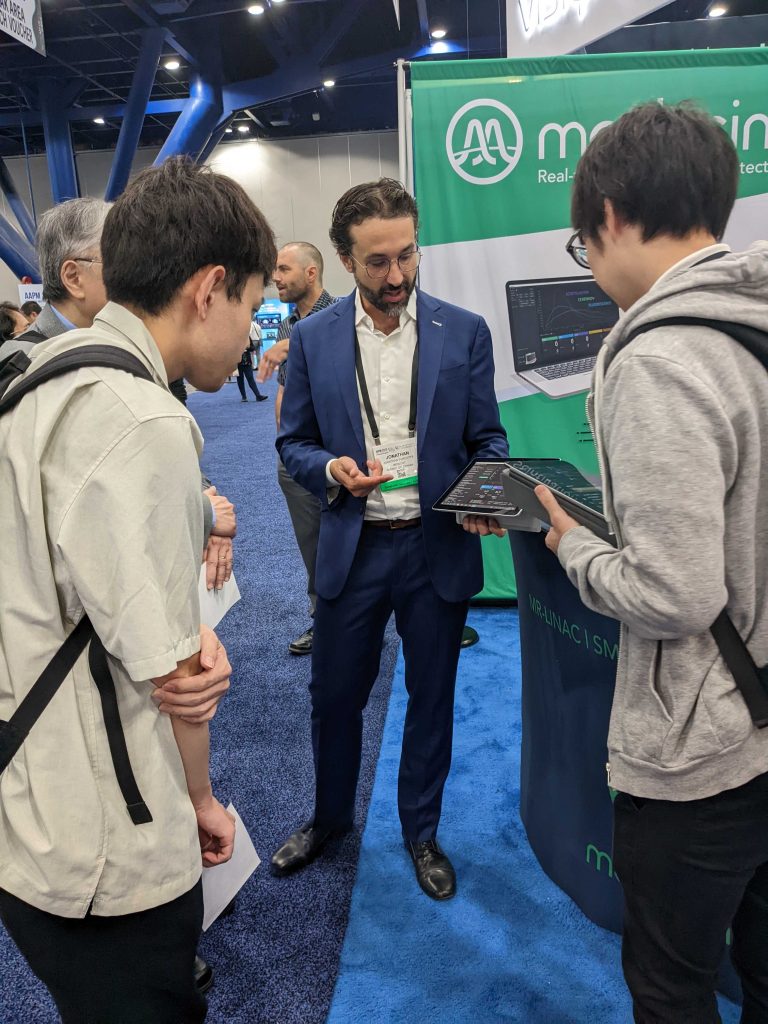
As for the presentations at AAPM as a whole, there were many presentations on AI and Radiomics, which we are researching, and they were very stimulating. There are not many symposiums in Japan, but there was also a symposium on CT-based pulmonary function imaging, which we are actively researching in our laboratory.
During the conference, I exchanged information with Associate Professor Kim of Yonsei University on the status and research themes of each medical physics laboratory (Yonsei University is one of the universities with large medical physics laboratories in South Korea) and conducted mutual research. We discussed exchanges between labs (It seems that Unity has also been introduced to related hospitals).
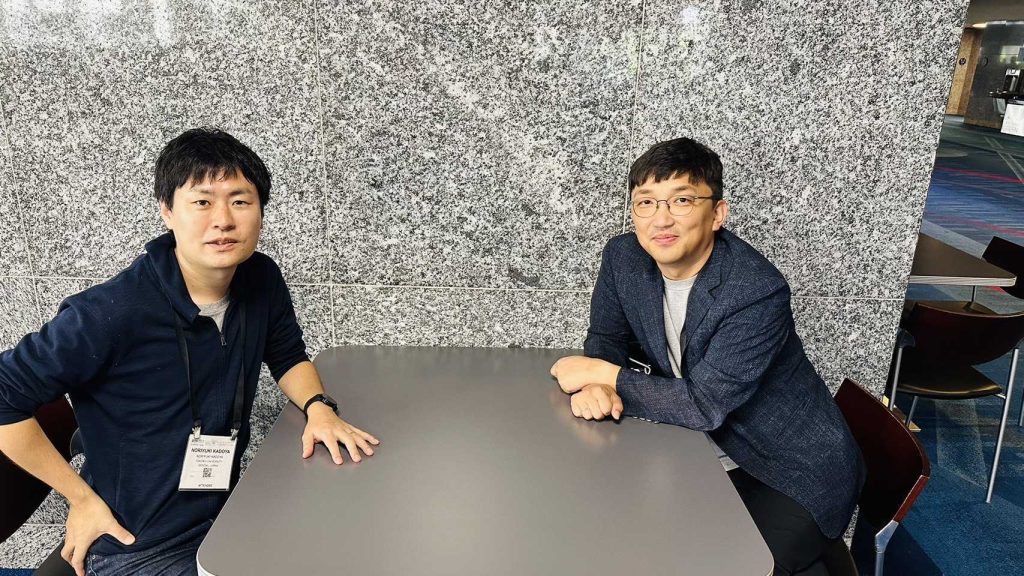
In addition, I was able to share various information with medical physicists from Japan (Prof Hayashi from Fujita Health University, Prof Kawahara from Hiroshima University, etc.), which also increased my motivation! I would like to continue to work hard to produce excellent research results while making use of the information I have obtained this time.
